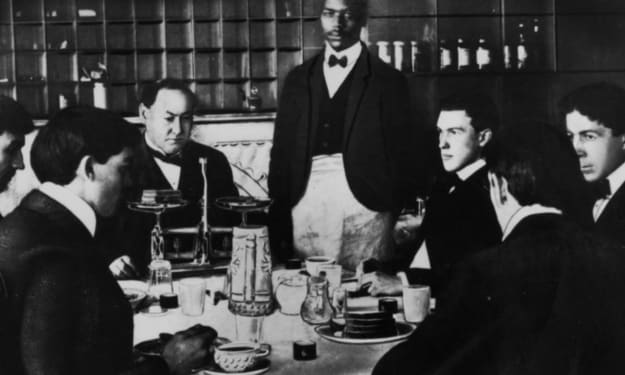Chemical Lobotomies: America’s Newest Form of Prescription Pain Killers
Social Problems

It’s in the back of your mind, when you enter an ER, and you’re seeking help for pain. Pain medication is not what you are here for. You want to know what’s wrong, and you’re afraid that they think you’re there seeking drugs. It doesn’t help your doubts when they do a drug panel screen test with your bloodwork, with or without your consent.
You’re in the emergency room to seek help. You’re in pain and you have been programmed to believe that the ER doctors will find the problem and rush you into surgery to fix you. You see it on TV every week, when you watch TV medical dramas. You receive confirmation from friends and family when they retell stories of how a friend or relative went to the ER and was diagnosed immediately, and their life was saved. However, when it’s your turn to need help, you rush to the ER and discover that your experience is dramatically different than anything you have heard from friends or have seen on television.
Hospital emergency room experiences can vary widely. If you go alone, the possibility of a good experience is minimal. If you show up with a wealthy, large caring family, good health insurance, and a stable job with good standing in the community, then your experience is going to be exceptional, with all of the bells and whistles and flashy equipment trying to help you get the care that everyone should be entitled to, sometimes.
Why has the emergency room changed so much over the past few decades? Let us start with what we have all heard on the news, through rumors from friends or family, and/or from seeing or experiencing it firsthand, that drugs in America has become an epidemic. It might not appear on the surface of a town, not like in the slums of cities, where people are walking around with little cellophane wrapped balls of crack shoved up in the pockets of their gum line, only pulling it out when a possible opportune drug buyer passes by. “Vente dollares, Vente dollares!” isn’t something you will hear on the street corner in a small pennsylvania town, unless it’s in regard to a dozen roses on Valentine’s Day. With the past decades round up of immigrants, you won’t be hearing many solicitations, of any kind, in spanish, but that’s another topic for another time.
Oxycodone, hydrocodone, oxymorphone, morphine, codeine, fentanyl, benzodiazepines, such as Valium, are all controlled substances that were once given to patients for pain and anxiety, frequently. These medications are now deemed to be too addictive for doctors to prescribe to patients who claim to have chronic pain. Patients who have temporary injuries are recently discovering that these types of pain killers are no longer given out as prescriptions in the ER or by their family doctor, even when they are in need of pain relief from broken bones. Doctors are feeling the pressure from the government, and recent lawsuits against the medical industry, to stop assisting patients with pain through prescription drugs, because of the high likelihood of addiction after a 72 hour period of use. Ibuprofen has become the only option for most people with pain caused by a short term injury.
Chronic pain, in the emergency room, is treated differently than short term pain. People with chronic pain are constantly placed upon a pedestal of doubt, even by their loved ones who are accompanying them to a doctor’s office. People with chronic pain have very little chance of receiving any kind of treatment in an ER setting. Many people will agree that this attitude towards people with chronic pain is acceptable. Unfortunately, many people who suffer from chronic pain are actually suffering from life threatening health problems that are ignored by hospital ER’s, that often lead to the early demise of the patient. There is no recompense for those who suffer from chronic pain due to life threatening illnesses or for their family, because it is not considered malpractice to not treat them. In fact, refusing to treat chronic pain in an ER setting is general practice that is taught to medical students, and malpractice is only considered in cases of outward maliciousness. Malpractice is another topic for another time.
People with chronic pain most frequently suffer and die from a lack of medical treatment. Some of these patients commit suicide to end their own suffering, and others succumb to their illness which only becomes apparent after their death. The reason is, because there is rarely a doctor who is willing to risk their doctor’s license and career on giving a diagnosis to a person with chronic pain, because of the possibility of having to prescribe pain medication that could lead to future addiction. Many doctor’s will push people with chronic pain into seeking help with a counselor and with a psychiatrist. This is something that people with chronic pain have a deep fear of, because it is confirmation to them that no one believes them, and some patients can be easily gaslighted into feeling that their pain is not real or that they are mentally ill. It is actually a bit more sinister than that, whether the doctors who are taught to do this to their patients are doing it intentionally or not.
Patients with chronic pain are often prescribed medications that cause damage to the brain that is equal to that of a physical lobotomy, but with lesser consequences. Sometimes the effects of these medications can be reversed, but sometimes the damage is permanent. Depending upon the length of time a person is taking these medications and the actual reason for the chronic pain, depends upon the amount of changes that the medication has made to the brain and whether or not the brain is able to repair itself after the medication is no longer needed.
A chemical lobotomy can be caused by any medication that causes the brain to stop producing certain chemicals or hormones, or the opposite, to produce a larger quantity of a specific chemical or hormone to help stabilize mood and emotions and to block out pain. It is a new term that can be heard among caretaker staff when referring to patients who’s personalities and mood have been permanently altered by a specific drug that may have been prescribed for pain, or something more generic. Gabapentin, duloxetine, seroquel, Xanax, Paxil, Fluoxetine are only a few examples of medications that are used to block nerve pain, but they also stabilize mood and make patients complacent, sometimes permanently.
These new type of mood altering and pain relief medications are not new, they were not created to control pain or alter mood, these are accidental side affects that were discovered after patients were given the medication for other purposes. Over time, the medical industry discovered that these medications were an ideal replacement to the opiates that are now considered too addictive to administer to their patients without liability. Having a psychiatrist administer pain medications to patients with chronic pain also lends to the idea that the patient may be suffering from a mental illness, since most of these drugs were originally designed for patients suffering from psychosis. A patient seeing a psychiatrist to be treated for chronic pain, who is administered anti-psychotics in the form of chronic pain medication is less likely to win a law suit against the medical industry, because, agreeing to seek help from a psychiatrist for chronic pain reinforces the idea that the patient suffers from a mental health issue. This lessens the medical industries biggest problem, the issue of liability.
How long can the medical industry continue to administer anti-psychotic medications to those that suffer from chronic pain before that, too, becomes a form of liability? When will the lawsuits start to become too many, before the nation awakens from its drug induced slumber and the public starts to acknowledge that the new opiate replacement is worse than the last? I suppose it depends on whether or not the patient wants to wake up. Until the FDA is forced to claim that these new pain medications are doing more harm than good, it’s actually a great solution. It’s a quiet machine that works softly in the background as the politicians and the medical industry find a way to reign in control of the opiate problem that they created. These new medications leave a person in a trance, makes them less likely to seek other forms of drugs, makes them forget about their problems and their needs, causes them to become less adventure seeking, less likely to seek attention through forms of violence, until they become so tranquillized that they are unable to perform everyday tasks. Until people stop taking the medication and start fighting the forced use of these new pain medications, the problem will continue to grow right underneath our noses. However, is it worth the pain, because, without the medication, the chronic pain returns and takes away all hope of resistance.
I write from experience, as a person who has suffered chronic pain for two decades. An ovarian torsion, that could have been treated quickly, was ignored by emergency room doctors and treated as a possible drug overdose. I am not a drug user and never have been. The ovarian torsion caused my ovary to rupture repeatedly for 20 years, and I was refused treatment because one emergency room doctor wrote in his report that I was a middle aged woman seeking attention. The doctor that discovered the rupture did so during a laparoscopic surgery. It took five hours to remove the scar tissue and ovary from my abdominal cavity and I was forced to have a radical hysterectomy to save my life. I was unaware of the pain I was in, because I had been placed on anti-psychotic medications that also acted as nerve blockers to help me with my chronic pain.
About the Creator
Chelas Montanye
I’m an advocate for education and equal health care. I love satire. I love to express myself through art and writing. Social issues fascinate and astound me. Co-founder of Art of Recycle.






Comments
There are no comments for this story
Be the first to respond and start the conversation.